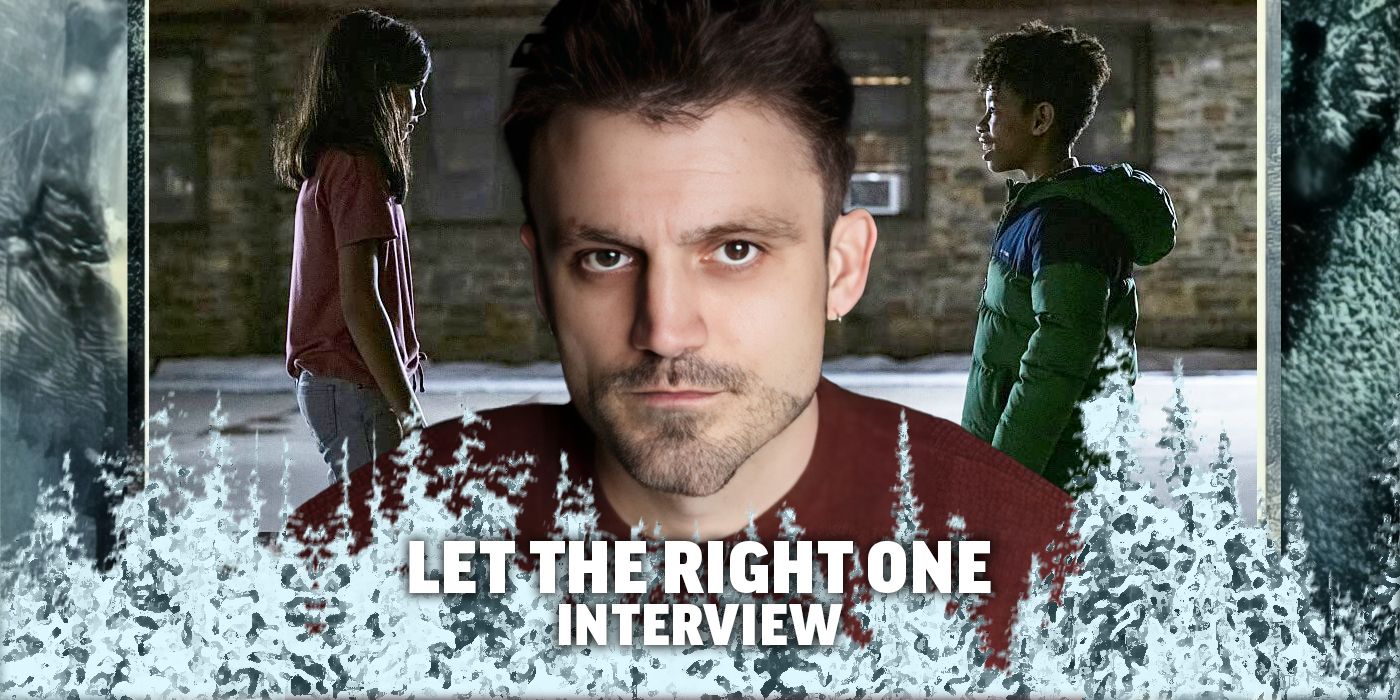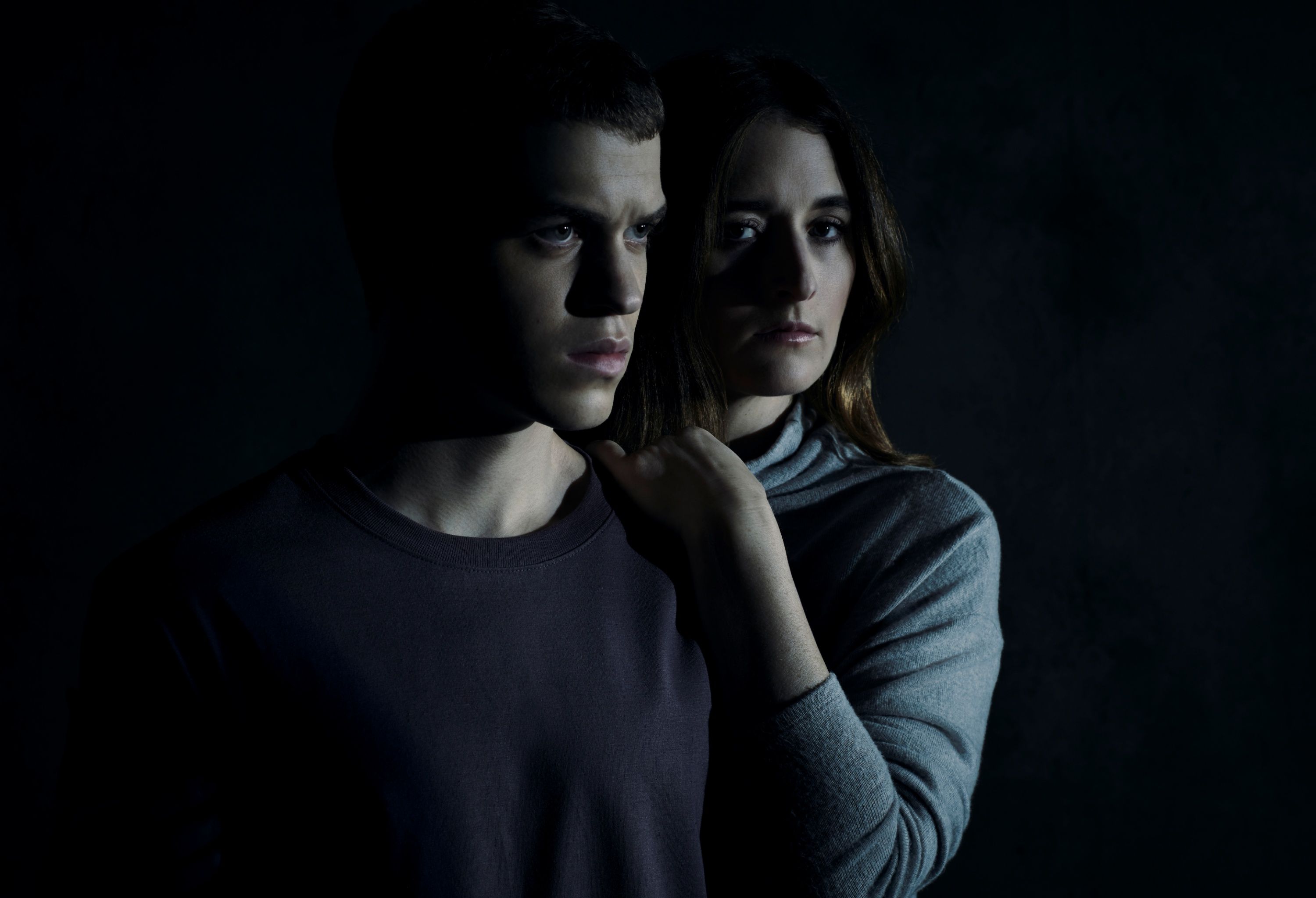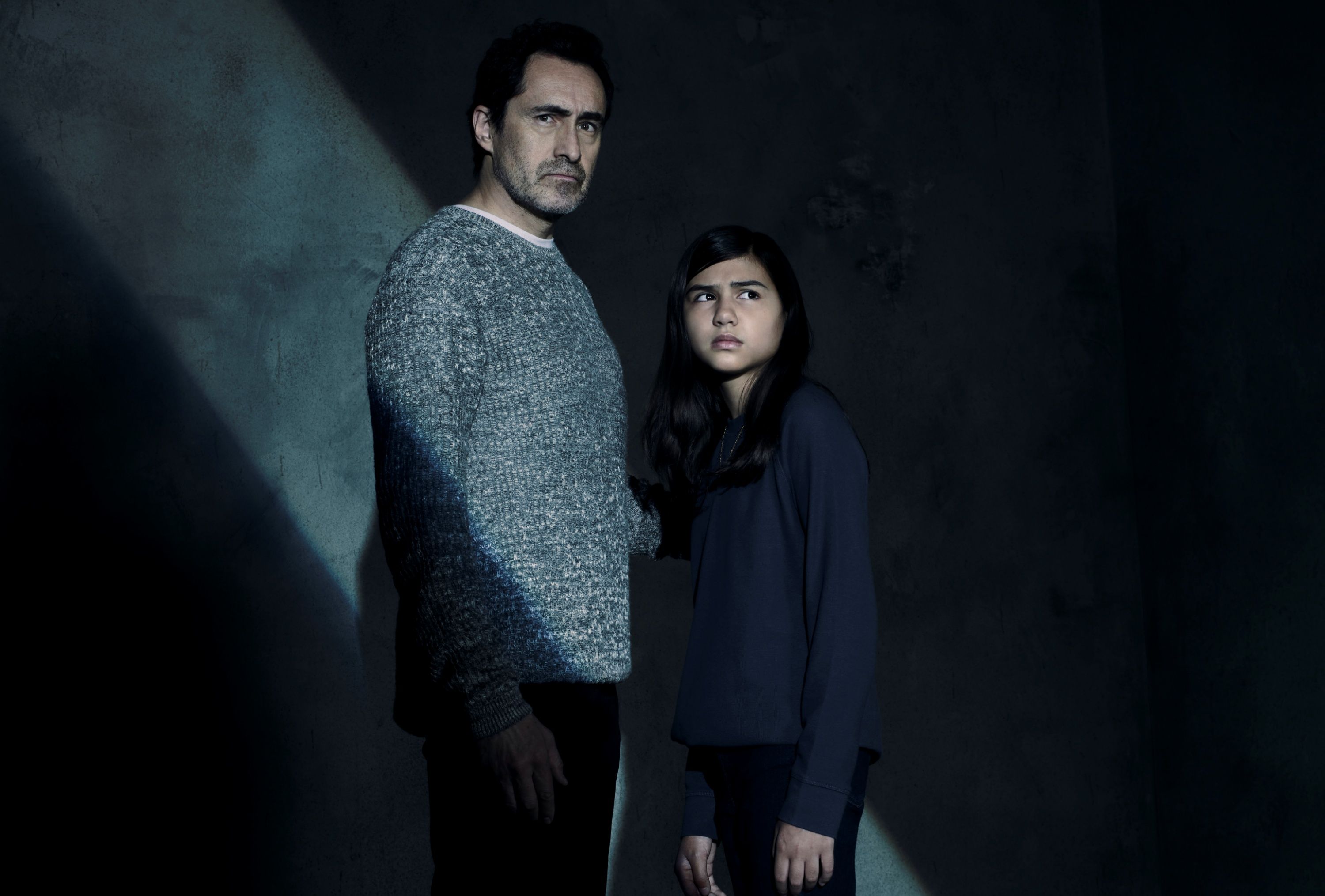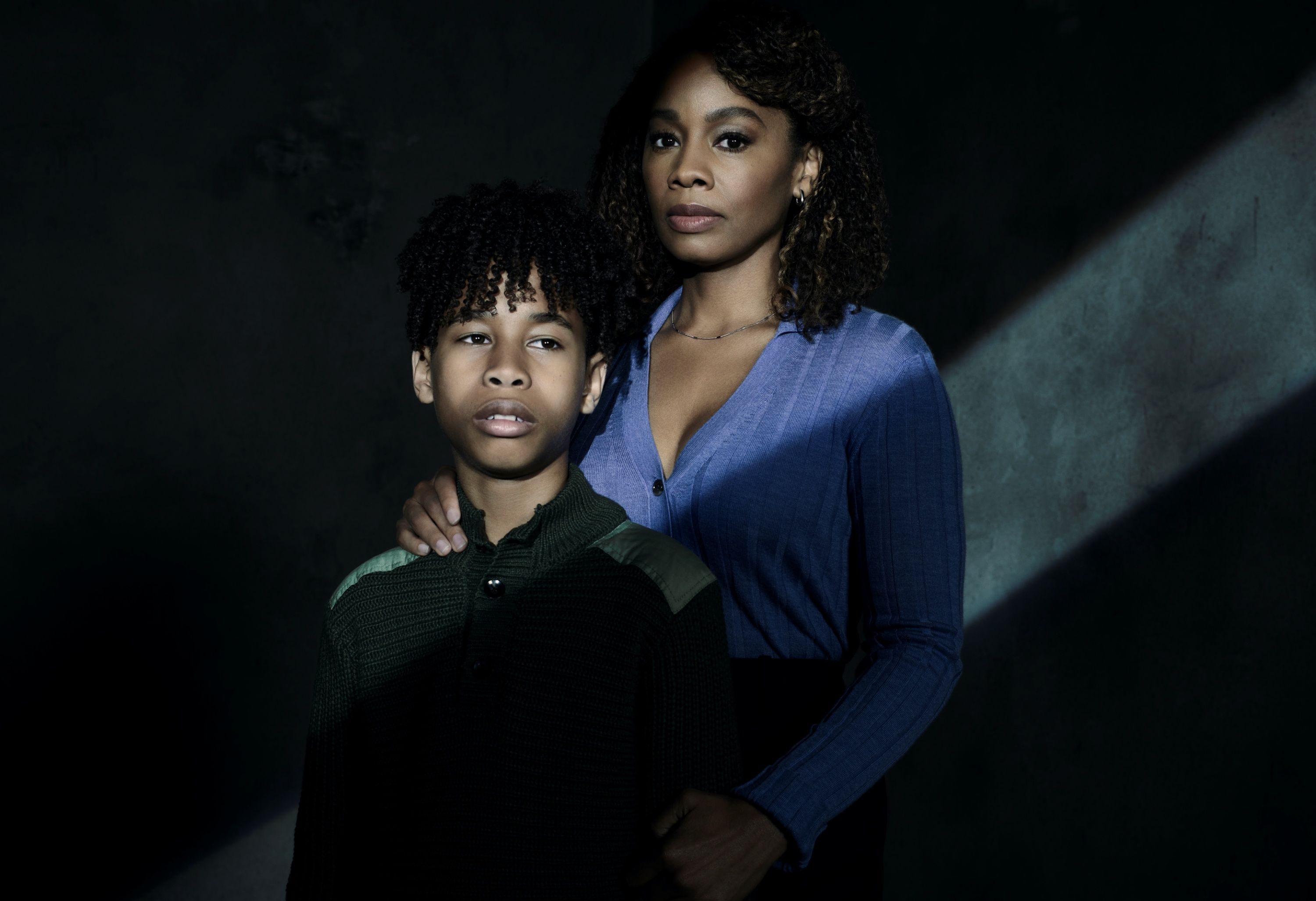From showrunner/writer/executive producer Andrew Hinderaker (Away) and inspired by the Swedish novel and film, the 10-episode Showtime drama series Let the Right One In follows Mark (Demián Bichir) and his daughter Eleanor (Madison Taylor Baez), who are keeping a terrifying secret from anyone they cross paths with. Always worried that someone might question why Eleanor will never physically age beyond 12 or wonder why she needs human blood to stay alive, Mark does everything he can to help her hold onto her humanity while searching for a possible cure.
During this 1-on-1 interview with Collider, Hinderaker talked about finding how to make this his own while also honoring his love for the original, expanding the story for a TV series, working with Baez on such a challenging and demanding character, taking every act of violence seriously, balancing vampire mythology with the human relationships, and the advice he received that helped guide his career path.
Collider: I haven’t read the novel, but I’ve seen both of the movies, and I was definitely wondering how this would work as a TV series. When you’re taking on something that has already been through these different variations, how daunting is that to do, and still find a way to make it your own and make it a story that you want to keep telling because you’re making it as a TV series?
ANDREW HINDERAKER: That’s a great question. The amazing thing about having these beautiful films that come before, and I appreciate your mentioning both of them – I was lucky enough to work with Matt Reeves on Away, and he’s an astonishing filmmaker, and the Swedish film is pretty close to perfect – is that there’s a great freedom in that. If you were just trying to recreate them, what’s the point? Let perfect be perfect, right? They’re exquisite in their own right. So, I wouldn’t approach them as, “Let’s try to do exactly what they did, but add just enough details that will get us 10 hours of storytelling.” It was imperative to me to start with a love for the film, but to see if there really was space to write something personal and something that felt like it required more time and space to tell. For me, the opportunity to take that secondary relationship between the child vampire and the caretaker and make it a parent-child relationship, provided this platform to really explore something that I was eager to explore, with how far will a parent go for their child, when that child is afflicted or even addicted, in this case to blood? With that central theme as its own story, I could trust that the love that I have for the film would seep into the DNA of our series, but that it could be its own thing altogether.
At the same time, did you have to think even further ahead, to see where this story could go and for how many seasons you could tell it?
HINDERAKER: You’re really putting five films worth of content into one season, and then going to the next season and five more films of content. For me, it all funnels back to, what is at the heart of your show? Does it sustain several seasons? And I mean that both emotionally and narratively. Emotionally, is there a beating heart that really holds the weight of 50, 60 or 70 hours of storytelling? For me, that parent-child relationship did. That question of how far Mark would go for his child, but also how far all the people in the show are going for the characters, the creatures, and the monsters they love. There’s this great line in the novel that talks about how the vampire was infected, and what that line unlocked for me unlocked was that, if there’s an infection, then there’s potentially a treatment or a cure. That creates an overarching storyline about how this is gonna take a long time and have a lot of steps and have a lot of obstacles inherent to it, particularly while you’re engaged in that story. You have to kill people to feed your child. That felt, emotionally, like this is a story that not only can carry the weight of several seasons, but requires it, from a plot standpoint as well.
There’s always been this unspoken taboo with children in vampire stories getting turned because they could be hundreds of years old, but still look like a child. What is that like to handle from the writing side, and what’s that like to handle from the performance side? How is it to work with Madison Taylor Baez on that?
HINDERAKER: It’s extraordinary to work with Madison. She is ferociously talented, and to her great credit perhaps doesn’t realize just how talented she is. She comes in like a true professional and is shockingly humble, for just how incredible she is. What is really exciting about working on a show where you have a character who’s 12, but has been 12 for 10 years, is, that has to be played by a 12-year-old. At the same time, you’re asking that 12-year-old to have 22 years of lived experience. You’re not a 22-year-old trapped in a 12-year-old’s body. You’re 12, but you have a 22-year-old’s worth of experience. That makes the character, in many ways, inappropriate for the character of Isaiah. She’s dangerous and more mature than him, but she would be equally inappropriate for a 22-year-old friend. She’s trapped in this multiplicity of existence, and that’s asking a lot of a 12-year-old to play. Madison just delivers and delivers and delivers, and it’s astonishing.
In the trailer, Mark mentions how many people he’s had to kill to keep his daughter alive, and in the first episode we see him kill someone that’s closer to his own life than he realizes. Will that killing cause an issue that we’ll continue to see play out this season? Is that something that’s going to be a big part of the story that you’re telling in these episodes?
HINDERAKER: Yes. Emotionally and narratively, yes.
That was definitely something that was shocking. My first thought was, “You have no idea what you just did.”
HINDERAKER: One of our tenets in the writers’ room is that we take every act of violence seriously, and we take the emotional and psychological impact on the person who’s committing that act of violence seriously, but also the person who’s the victim of that act of violence and everyone who loves them. It radiates and impacts and devastates and destroys. And so, it has a major impact in Season 1.
Previously, the story has been less focused on the vampire mythology and more focused on the character dynamics, just because there isn’t as much time in a movie. What’s it been like to incorporate both of those things together? Are there aspects of vampire mythology that you’re finding most interesting to explore and figure out how to weave those comparisons to humanity into it?
HINDERAKER: Yeah. My first job writing for television was for a series called Penny Dreadful, which was also on Showtime, and I had the privilege of writing for John Logan. One of the things that John talked about is that the beautiful thing about horror is that you can literalize the metaphor. What is monstrous within you, you become an actual monster, and there are actual ghosts. Similarly, I feel like some of these rules and mythologies actually open up opportunities for interpersonal relationships. One of the big rules in our show is that a vampire has to be invited into someone’s home. That, in itself, is an act of vulnerability. That, in itself, is an invitation. You can allow that to be simply a rule in the show that’s a fun thing, or you can really interrogate that question of, if someone is struggling deeply with addiction and is destructive because of it, and if that someone is my child or my best friend or my brother, how much do I let them into my life? How much can we, together, find the light, and how much will I potentially be pulled into the darkness? These great tropes of a genre I adore can also speak to me deeply, as that guy who started as a playwright in Chicago and just wanted to write stories about human relationships.
With more time, you can expand this world, and it feels like this show is about three families. You have Mark and Eleanor, and Naomi and Isaiah, and Claire and Arthur. What have you enjoyed about getting to explore those different perspectives, and intertwining them and connecting them at different points?
HINDERAKER: Exactly that. I ferociously love all the characters you just mentioned. They all occupy different parts of my brain and heart, but also different visual landscapes in New York, and different tones of the show. One of the privileges of the show is that there’s an emotional drama, a horror show, a true crime mystery, and a thriller, that all come together and that all belong in the same ecosystem because of all of those people. Because of that, it feels like a show in writing and in viewing. It’s thrilling to go from this family to this family to this family.
It’s interesting to look at your career, going from Penny Dreadful to Away and now to this show. On the surface, those projects seem very different, but there are also similarities to them. Do they feel like steps on the same career path, or has the direction of your storytelling been a surprise to you, at all?
HINDERAKER: My career path, such as it is, was guided by advice that I got very early on from a playwriting mentor who said, “As long as you keep doing projects you love with people you like and admire, you’re gonna be fine.” I think the projects that speak to me tend to be ones that are deeply personal and deeply emotional. I also like characters who are going through singular experiences that are also simultaneously universal. This show is about a singular creature, a vampire, but at the same time, it’s about a father and a daughter. It heightens something that we can all relate to and we can all connect with, just as Away was about astronauts going to Mars. When you actually meet the astronauts, they have these completely singular experiences, but they’re also defined by the people at home that tether them to earth, even as they go 30 million miles away. In Penny Dreadful, the characters are exquisite and singular, but deeply human, and we connect to them. For me, it’s that theme, even if it’s two vampire shows for Showtime and a space drama. They’re all connected by that thread, being deeply emotional human stories that play out in exceptional circumstances.
Let the Right One In airs on Sunday nights on Showtime.




